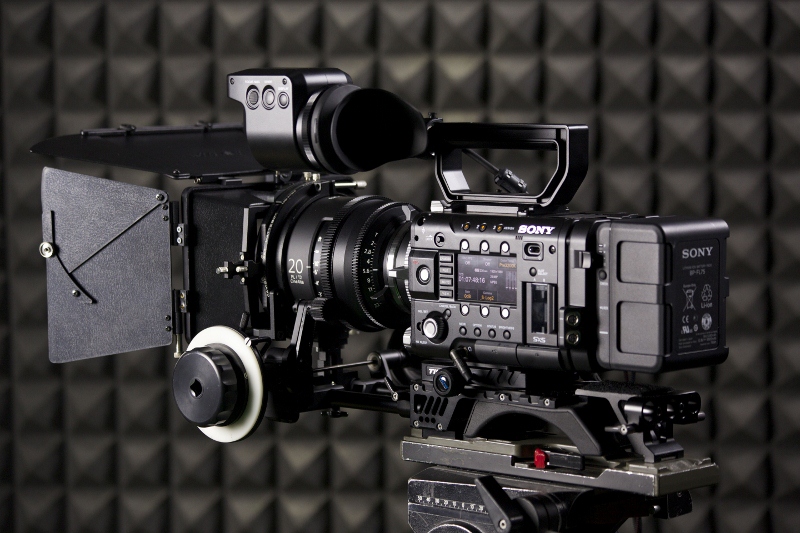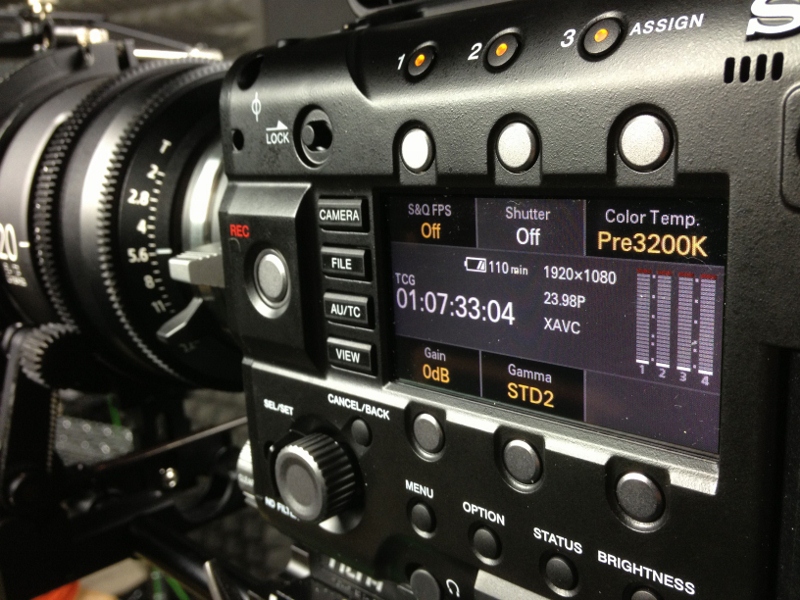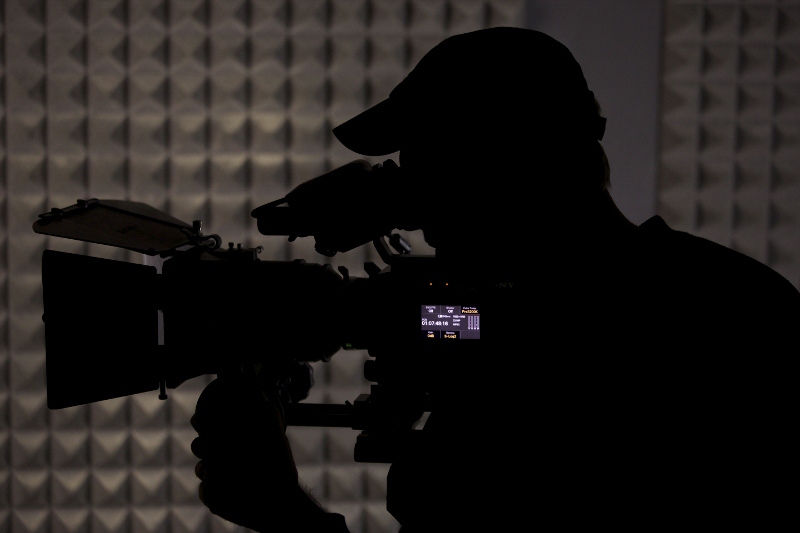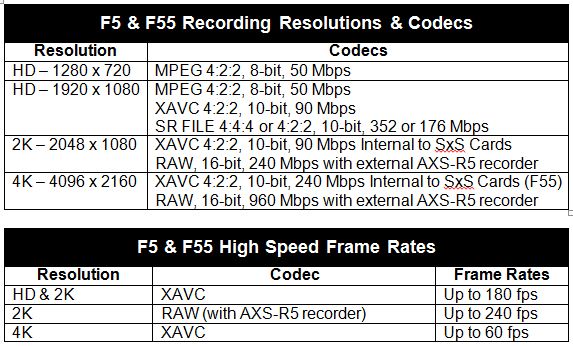< Back to all posts
It’s All About The Workflow with the PMWF55 and PMWF5!
Camera systems must be beneficial not only to crews, but to editors as well. Easy and straight-forward is key. If not, people won’t use it. Hands-on experience has shown us that Sony’s recently introduced PMW F5 & F55 camera systems are two of the most versatile large sensor cameras produced so far. These cameras are well suited for features, commercials, music videos, documentaries, and even corporate productions. From acquisition through post, these cameras have distinct advantages over rivals, including the RED, as well as Canon’s C300 and 5D. The F5 & F55 one up the competition when it comes to ergonomics and lower power consumption. Additionally, Sony’s high quality XAVC codec allows a more efficient postproduction workflow.
Other than these 5 items, the cameras are virtually identical. Please visit the Sony Pro website for complete specs on both camera models.
SHOOTING HANDHELD WITH LARGE SENSOR CAMERAS HAS BEEN, WELL… DIFFICULT AT BEST.
As all operators know, comfort is key when shooting handheld. The ergonomics and superior viewfinders for easy focusing of the F5 & F55, allow operators to do just that. Utilizing 3rd party accessories like Arri’s top and base plates plus remote handle with record trigger, the camera becomes more balanced on the shoulder. Now, it is more reminiscent of a shoulder mounted XDCAM camera without dealing with cumbersome “franken-rigs”. The low power consumption of the F5 & F55 also makes it preferable to other large sensor camera systems. Sony’s Olivine batteries allow for charging in half the time of conventional lithium ion batteries. Other comparable systems like the RED require significantly more power.
camera becomes more balanced on the shoulder. Now, it is more reminiscent of a shoulder mounted XDCAM camera without dealing with cumbersome “franken-rigs”. The low power consumption of the F5 & F55 also makes it preferable to other large sensor camera systems. Sony’s Olivine batteries allow for charging in half the time of conventional lithium ion batteries. Other comparable systems like the RED require significantly more power.
FINALLY! A SYSTEM FOR MORE LENS TYPES.
Let’s talk glass. Larger and heavier PL mount prime and zoom lenses are great but probably overkill for most corporate shoots. Third party lens mount adaptors allow you to use the lighter and less expensive Canon EF style lens mounts. The best one available right now is Optitek’s Mark 2, which powers the lens directly through its contact pins. The best thing about the adapter is that you can control the electronic iris and get full lens data in your viewfinder. Another good adaptor, although expensive, is Sony’s just announced LA-FZB1 FZ to B4 mount adaptor. Now, you can use most 2/3” broadcast lenses that you may already have with these cameras. You’re good to go either handheld or tripod, for fast, high quality production.
SONY’S STRENGTHS ARE IN SENSOR AND CODEC DESIGN.
 Both cameras have very little noise and are great in low light. The F5 has an ISO rating of 2000 while the F55 has a slightly lower rating of 1250 because of the global shutter. If you are able to use an F55, you can shoot 4K XAVC to SxS cards. By cropping the frame to your desired focal lengths in post you can in essence have a multicamera shoot with one camera. Because the XAVC codec is very robust, you will still get a nice quality picture when outputting to HD.
Both cameras have very little noise and are great in low light. The F5 has an ISO rating of 2000 while the F55 has a slightly lower rating of 1250 because of the global shutter. If you are able to use an F55, you can shoot 4K XAVC to SxS cards. By cropping the frame to your desired focal lengths in post you can in essence have a multicamera shoot with one camera. Because the XAVC codec is very robust, you will still get a nice quality picture when outputting to HD.
CODECS ARE KING…WORKFLOW EXCELS WITH WIDE VARIETY.
For the purposes of this article, we are not going to go into detail about 4K RAW workflow, S-Log recording, MLUT’s and grading. We are focusing on corporate and TV production worldwide, which typically do not record RAW and S-Log. For more detail on these topics checkout Sony’s 4K workflow guide and F55 showcase page.
MEDIA MANAGEMENT, A BREEZE WITH THE RIGHT TOOLS.
When it comes to media management, we use ShotPut Pro, a $99 steal-of-a-deal that’s both Mac & PC compatible and worth every penny. ShotPut Pro allows you to copy recorded media to multiple drives simultaneously and then verifies the transfers. Once successfully verified, an offload log is created. When running and gunning, we use the NEXTO DI NVS-2825, a small handheld unit that can save and verify footage to two drives simultaneously without the use of a computer. Another one of those “cover yourself” tools that makes tapeless shooting a little less stressful.
POST-PRODUCTION WORKFLOW GETS EASIER WITH PLUG-INS.
Sony’s new software called Content Browser, makes viewing footage simple. The only caveat is that Sony charges $20 for the software, which we believe should be free with Sony cameras. We have a saying down here in Florida, “is the juice worth the squeeze”? We say yes. Even if you have to buy it for your client, it’s worth doing, to sell the idea of easy workflow to your client.
The codec you record in will determine the compatibilities of your Non-Linear Editing software. Here is a breakdown of common NLEs and their support of Sony’s codecs:
The latest NLE plugins and Content Browser software are all available on Sony’s website for download.
EMBRACING CHANGE… CAN SAVE EVERYBODY TIME & MONEY.
In the past most editors dictated that PRO-RES be recorded in the field with additional 3rd party external recorders, or converted recorded footage to PRO-RES for ingest. This adds expense, bulky add-ons to your rig, enlarges the file sizes with no increase in quality, and is a more time consuming workflow. With Sony’s efficient codecs such as XAVC, this is virtually eliminated. Shoot it, ingest it, no conversion, no enlarging of files… just start editing! Editors need to try out these new technologies for themselves; change and embrace these new and better workflows and consistently keep their systems up to date. Once they do, they’ll never go back!
F5 & F55 TAKES THE WORK… OUT OF WORKFLOW.
Our experience with the F5 & F55 has been mostly positive so far. Like any new camera system there are glitches that must be solved. Sony, unlike in the past, is all ears and making the necessary changes to remain nimble and competitive. Sony is acting more like a young upstart rather than an old established company, set in their ways. The feature benefits of these large sensor camera systems, ergonomic design, low power consumption, better codecs, and a more efficient postproduction workflow, save us all time and money while still maintaining a high quality product. That’s what our clients want, after all.
It’s all about the workflow!

By Guest Blogger, Tom Brunstetter, Principle
Tom Brunstetter is an Emmy, Addy award winning DOP as well as a principle at Paradise Video and Film based in Ft. Lauderdale, Florida.










Leave a Reply